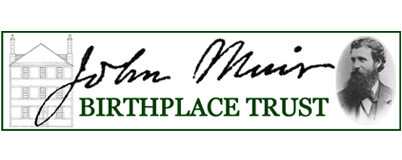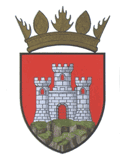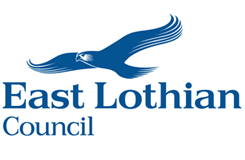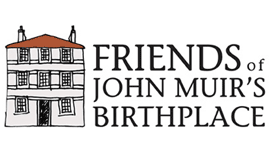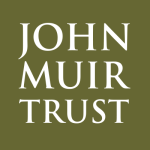Part 8 – The Post Muir Years
Our next couple of posts will look at the story of John Muir’s Dunbar homes after the Muirs left for America. The amount of detail available grows – as does the pace of change in both ownership and occupancy. This post focuses solely on John Muir’s Birthplace.
Daniel Muir Moves On
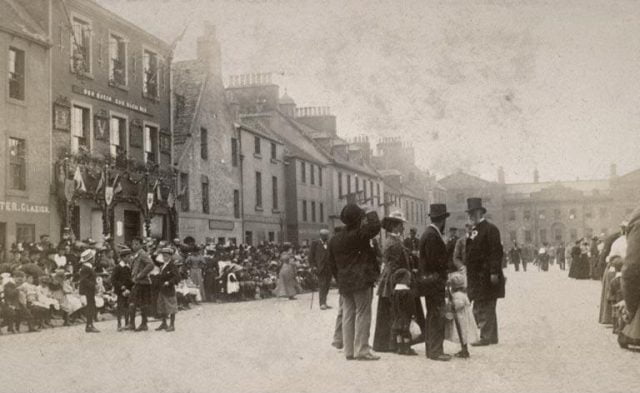
When Daniel Muir moved his family out of the original room behind his shop he kept the tenancy of the building – or at least, he was the named tenant for the residual Wightman estate. In 1841 the building was occupied by:
on the ground floor, John Finlay a retired sea captain, his wife Catherine, their daughter Margaret and granddaughter Marion Runciman. John Finlay was trading as a spirit dealer from the shop. It may be that Finlay was one of the ‘old sailors’ who the boys of Dunbar enlisted to sort the sails and rigging of their toy boats, as recounted by John Muir. He was certainly handily placed for John and Davie. Odd to think that this old sea-dog in his little grog-shop was the grandfather of a Baron and great grandfather of a Viscount!
on the middle floor, James Low, a blacksmith, and his family – 12 people in all!
on the top floor, George Jeffrey and his family – 5 people.
That’s a total of 21 people resident in what is now the John Muir’s Birthplace Museum, in three distinct households but with no real amenities – neither running water, gas lighting or even an indoor toilet!
The next event in the building’s tale came in 1846. Still desperate for money Dr Wightman sold the house to Matthew Watt of Belhaven (Wightman’s financial difficulties would be common knowledge). Watt had been a hand loom weaver but, as that profession was driven out of the market by mechanisation, had opened a successful grocery. He bought the house as an investment and continued to live and trade from Belhaven.
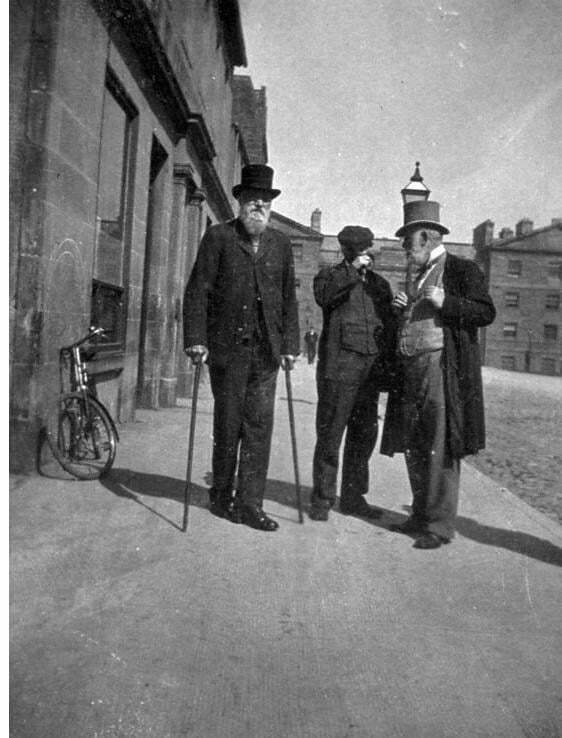
Daniel Smith (far left)
Matthew owned the house until he died in 1874 at the age of 80. In 1877 his estate sold the house to a sitting tenant, the postman Peter Aitchison, marking the start of a period of rapid turnover. Betsey Anderson owned it in 1878, William Fraser in 1879, William Rennie in 1883, and Daniel Smith in 1885. Smith’s purchase marks a return to stability: it remained in his hands, then his heirs, until 1924.
Who Lived in the Birthplace
It’s impossible to list all the inhabitants of the Birthplace, so we’ll highlight just a few. A stanza from an old Dunbar song or rhyme helps us to begin:
‘And a’ our great worthies are sure to be there
‘In summer, or winter, be it foul, be’t fair
‘Matthew Watt, Willie Howell, Willie Liddle would drop,
‘In tae hear a’ the news in John Cockburn’s shop.’
Matthew Watt we know: he owned the building from 1846; Willie Howell, a bookbinder to trade, lived with his family on the top floor from around the time of Matthew’s purchase to his death in 1879; John Cockburn, whose saddlery is celebrated in the song as a great place for chat and gossip, occupied the middle flat between 1861-69. It’s pretty clear that Matthew preferred to let to his friends.
After the Howells, the top flat was rented by Alexander Thompson (a tailor) and family; Staff Sergeant Flowett Marshall (serving with the staff of the local volunteers) and family; John Robertson (a (horse-drawn) vanman) and family; and then into the 20th century with Walter Brydon (a gardener) and family.
Down below them, after John Cockburn moved to Edinburgh, the middle flat was rented by John McCliskie (ropemaker) and family, John Frame (a groom who subsequently worked as a grocer) and family, the carter Alexander Dickson and his family; and then the labourer Martin Jewels and his family.
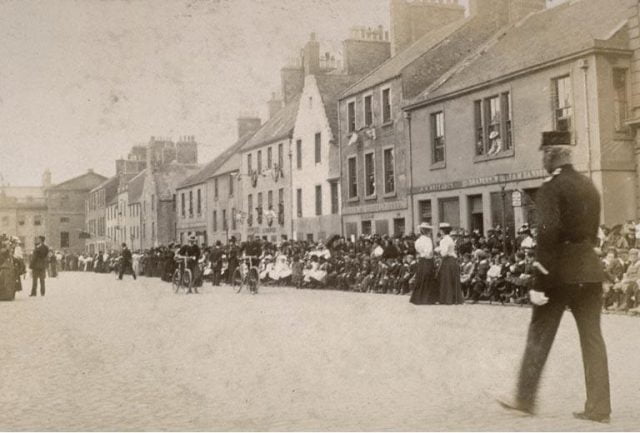
Below them the shop saw some transformations. There’s a gap in the records after John Finlay until the financial year beginning April 1857. It then became Dunbar Post Office when Miss Barclay took up the lease. The PO had been nearer the West Port under Miss Barclay’s father, the previous Postmaster. This change saw the shop quickly revalued from £7 to £10 annually, so there must have been significant work carried out; perhaps gas lighting was then installed. In 1872 Miss Barclay sub-let the premises to a Mrs Hannan when the Post Office relocated again, then Peter Aitchison occupied the shop for some years (the first owner occupier in the house’s history). His successor was William Fraser, another owner-occupier and Dunbar harbourmaster, who seems to have set the shop up as a grocery but mostly sub-let its operation. Andrew William Anderson, a clock and watchmaker newly arrived from Dundee, lived with his family in the Muirs’ old quarters for three years as he was establishing his business in Dunbar. He was followed in 1889 by William Black (and his sister) who had a drapery through until 1916.
Next – Muir Houses Through Time – Part 9 More Post Muir Years


